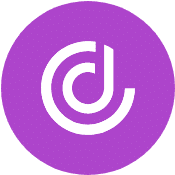Usage Data Management
Table of Contents
Table of Contents
What is Usage Data Management?
Usage Data Management (UDM) refers to the processes and tools used to collect, store, analyze, and utilize data generated by users interacting with a product, service, or platform. It helps businesses optimize operations, refine pricing models, and improve customer experiences.
Synonyms
- Consumption Data Management
- Product Data Usage Platform
- Usage Analytics
Core Principles of Usage Data Management
The core principles of UDM focus on building a strategic foundation for managing user-generated data efficiently and ethically. These include:
Service Optimization
Tailoring resource distribution based on usage patterns improves performance and guarantees consistent service delivery.
Cost Management
Data-driven insights from effective cost management allow businesses to identify inefficiencies and reduce operational expenses while maintaining quality.
Fraud Mitigation
Analyzing patterns and anomalies in usage data helps detect and address potential misuse or fraudulent activities.
Regulatory Adherence
Compliance with privacy and security regulations such as GDPR and CCPA ensures that UDM aligns with legal requirements while protecting user confidence.
Key Components
The key components of UDM form the technical foundation for transforming raw user data into actionable insights. These are:
Data Collection
Relevant usage metrics are gathered from user interactions across various touchpoints, including digital platforms, devices, and services.
Data Management
Collected data is organized and structured in formats that are accessible and easy to interpret, using systems optimized for scalability and efficiency.
Analytics
Advanced processing methods are applied to extract patterns, trends, and insights that inform business decisions and strategies.
Visualization
Clear and interactive dashboards present usage metrics, allowing stakeholders to understand data quickly and make informed decisions.
Benefits of Usage Data Management
The benefits of UDM focus on measurable outcomes that support business growth and adaptability.
- Customer Personalization: Tailored services and experiences are created by analyzing customer behavior and preferences.
- Revenue Expansion: Usage insights enable dynamic pricing models and reveal opportunities for upselling, driving additional revenue.
- Feature Evolution: Innovation is guided by user feedback and behavior, ensuring features align with customer needs.
- Operational Agility: Demand patterns are identified, allowing businesses to reallocate resources effectively during high-usage periods.
Challenges in Usage Data Management
UDM provides significant benefits, but businesses encounter challenges in managing and leveraging usage data. Addressing these issues is necessary for maximizing its potential.
Data Fragmentation
Usage data often resides in multiple systems, creating silos that hinder comprehensive analysis. A telecom provider, for instance, might collect data from call records, customer apps, and support channels, but without integration, these insights remain disjointed. Consolidating fragmented data requires robust infrastructure and strategy.
Regulatory Hurdles
Adhering to evolving privacy laws like GDPR or CCPA can be complex, especially for global organizations managing data across borders. Healthcare providers must comply with regulations such as HIPAA, ensuring sensitive patient data is handled with strict confidentiality. Balancing compliance with innovation presents a constant challenge.
Insight Overload
The sheer volume of usage data can overwhelm teams, making it difficult to focus on actionable insights. A software company, for example, might collect thousands of data points from its platform daily, but critical trends might go unnoticed without prioritization. Filtering data to highlight meaningful metrics requires both expertise and advanced tools.
Scalability Issues
As businesses grow, their data infrastructure must scale accordingly. A growing e-commerce platform tracking millions of transactions might encounter slower processing speeds or storage limitations. Without scalable systems, maintaining performance and accessibility becomes increasingly difficult.
Integration Complexity
Lastly, integrating UDM systems with existing tools and platforms can be a daunting task. An energy company deploying smart meters may struggle to sync new data streams with legacy billing systems, delaying analysis and action. Seamless integration demands careful planning and robust technology.
Best Practices for Managing Usage Data
Effective strategies for managing usage data help businesses derive meaningful insights and act decisively. Some of our best practices:
Adopt Uniform Standards
Setting consistent rules for how data is collected, stored, and analyzed creates clarity and reliability. Teams might struggle to interpret or compare data effectively without uniformity, leading to confusion and inefficiency. A clear standard makes sure that all data is accurate, accessible, and actionable across the organization.
Embrace Automation
Manual data processes are time-consuming and prone to errors. Automation replaces repetitive tasks, making data collection and analysis faster and more reliable. It also frees up teams to focus on interpreting data and making decisions, instead of spending time cleaning it up.
Encourage Cross-Functional Collaboration
Data is most valuable when it’s shared. Collaboration between teams ensures that insights are fully utilized and aligned with company goals. Without communication, important trends or opportunities might be overlooked.
Prioritize Scalable Frameworks
Usage data grows as businesses grow. Without scalable systems, handling increased demand can overwhelm existing tools and processes. A scalable framework allows your data management efforts to grow alongside your business without interruption.
Technological Solutions in Usage Data Management
The right tools are essential for effectively managing and leveraging usage data. These tools streamline processes, integrate disparate systems, and provide actionable insights.
Usage Management Platforms
Platforms designed for usage data management centralize information from various sources, making monitoring and analyzing user activity easier. These tools often include real-time tracking, reporting, and data segmentation features, allowing businesses to quickly identify trends and opportunities.
ETL Systems
Extract, Transform, Load (ETL) systems simplify the process of moving data between platforms. ETL integration tools are instrumental in creating a single source of truth for deeper insights. They guarantee that usage data from different sources is aggregated, cleaned, and structured consistently, reducing integration challenges and improving data accuracy.
Advanced Analytics
Analytics tools interpret usage data to reveal patterns, trends, and predictive insights. These technologies help businesses make data-driven decisions, refine strategies, and forecast future needs based on current usage behavior.
Common Applications of Usage Data Management
Usage data management plays a critical role across a variety of industries utilizing usage-based services, helping organizations optimize their operations and better serve their customers.
Subscription Services
Subscription-based businesses rely on UDM to track feature usage and implement dynamic pricing models. Companies can offer tiered packages or upgrade recommendations tailored to user behavior by analyzing how customers interact with services.
Utility Companies
Utility providers use UDM to monitor electricity, water, and gas consumption patterns. This data supports accurate billing, identifies inefficiencies, and informs demand management strategies during peak usage periods.
Entertainment Platforms
Streaming and gaming platforms leverage UDM to track user activity and engagement levels. Insights from this data guide content recommendations, improve user experiences, and increase retention by addressing churn risks proactively.
Healthcare Systems
In healthcare, UDM is used to monitor patient interactions with digital platforms, such as telehealth tools or wearable devices. These insights help providers deliver personalized care and optimize resource allocation in hospitals and clinics.
Transportation and Logistics
Transportation services use UDM to analyze route efficiency, vehicle usage, and customer demand. Logistics companies apply these insights to optimize delivery schedules and improve fleet management, reducing costs and improving service reliability.
Future Trends in Usage Data Management
Trends in usage data management are transforming how businesses use data, emphasizing predictive capabilities, interconnected systems, and improved privacy.
Predictive Analytics
Artificial intelligence is transforming data analysis by enabling systems to forecast trends and behaviors. Instead of reacting to usage data, businesses can anticipate customer needs, optimize resources in advance, and proactively address potential challenges. This shift allows organizations to move from reactive decision-making to strategic foresight.
IoT Integration
The growing adoption of Internet of Things (IoT) devices is expanding the scope of UDM. Data from smart devices, connected appliances, and sensors contributes to a richer understanding of user behavior. This integration enhances valuable insights and opens new opportunities for real-time service adjustments in industries like healthcare, transportation, and energy.
Advanced Privacy Technologies
As privacy concerns increase, businesses are prioritizing secure data practices. User-centric encryption methods, anonymization techniques, and consent-driven frameworks are becoming standard. These innovations help organizations maintain trust while complying with stringent data protection regulations.
People Also Ask
What is the role of UDM in understanding customer usage?
UDM helps analyze patterns in how customers interact with products or services, offering insights to improve experiences and meet needs effectively.
How does UDM support pricing plans?
By tracking consumption, UDM enables the creation of flexible pricing models, such as consumption-based, tiered, or pay-as-you-go structures, that align with customer behavior.
How does UDM contribute to building better revenue models?
Businesses use usage data to develop sustainable revenue streams by aligning offerings with actual consumption and customer value.



